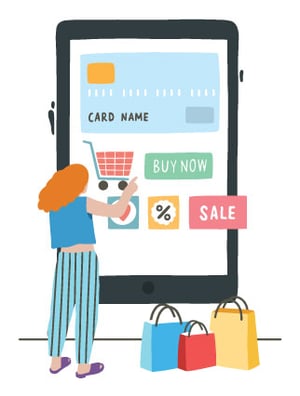Various organizations have to go through supply chain issues that can easily be addressed by technical advancements. However, due to certain industrial limitations and challenges, some businesses are unable to adopt technical advancements entirely.
Some businesses might fail to get
real-time end-to-end stock visibility in the supply
chain. Whereas outdated technology can create a shortage of business
continuity when there is a disruption or any other issue. There can
be an inability to adapt to the rapidly changing dynamics without a
suitable supply chain management system.
Any latest technology that enables
data-driven decision-making should center the strategy designing while coping
with these challenges. Microsoft Dynamics 365 Intelligent Order Management is a
modern and nimble, open platform that promotes businesses to do the exact
thing.
Microsoft
Dynamics 365 Intelligent Order Management is a robust
feature that comes with an incredible fulfillment optimization engine that
seamlessly manages order complexities, while also ensuring end-to-end real-time
visibility into each inventory and order stream.
A survey has found out that the
companies that ship products directly to the customers such as retailers,
manufacturers, and distributors, face certain challenges in this area and
believe in the need for digital transformation in their supply chain. An
Intelligent Order Management ensures Supply Chain Resiliency, given below are
some points delivering the same.
Incredible Fulfillment Optimization
There is a combination of factors
causing these issues to arise such as e-commerce, marketplaces, call centers,
and physical stores. Apart from this, there are a lot of fulfilling options
such as distribution centers, supplier dropshipping, and logistics
providers. And ultimately any location possessing inventory that allows them to
pull from there to complete customer orders.
The best part of this rule-oriented
and event-driven infused technology is that it allows you to connect to any of
these enterprise apps via straightforward API interfaces. As a result, the
companies can seamlessly connect to their current order management system such
as WMS and ERP hence allowing the client to experience a better flow while
keeping up with their comfort.
Robust Connectors
One of the most interesting things
about the Intelligent Order Management system is that it is a standalone SaaS
solution without any other D365 application dependencies. It contains an open,
interoperable and modular technical construction, so your business could
benefit from an expansive ecosystem of order source management systems such as online
mobile applications, online e-commerce, social platform as well as brick and
mortar channels.
One of the most significant uses of
this program is that it allows its users to configure order intakes visually
from one of the most common sources by influencing already built connectors in
a no-code application while making quick integration and implementation a real
thing.
ShipStation Integration
This ShipStation is a cloud-based
e-commerce shipping platform specially designed to generate shipping labels.
Users can automatically create labels with discounts, import e-commerce orders,
send out shipping notifications, and resend shipping details to the order
source. With the integration of ShipStation and Order Management, users can
combine all of their orders and order sources within the same
platform.
When the user receives an order while
selecting Shipstation for use, they can catch real-time delivery
timeline and carrier service from the ShipStation with intelligent
Order Management to provide users with visibility of shipment
details.
Tax Compliance
Another
great feature of Intelligent
Order Management is its robust tax determination and compliance. This
system enables you to connect to the third-party tax engines and automate tax
calculation based on the product classifications, location’s regulations,
files, and remit tax payments to jurisdictions. It can automatically omit tax
from exempt sales while taking care of the exception documentation. You can
pick from various pre-built partner connectors, Intelligent order Management
allows your organization the medium to effortlessly scale tax order compliance
globally for value-added tax, sales tax, lodging and occupancy tax, seller’s
use tax and consumption tax, etc.
Bottom Line
Companies
that ship direct-to-customer can heighten their supply chain
resiliency with end-to-end visibility into their supply chain. In an order
management solution, the digital transformation part comprises a fulfillment
optimization engine. Microsoft
Dynamics 365 Intelligent Order Management comes up with a robust
Fulfillment system. Trident
Information Systems is a Gold
Microsoft Partner who has served multiple business ventures so far.







